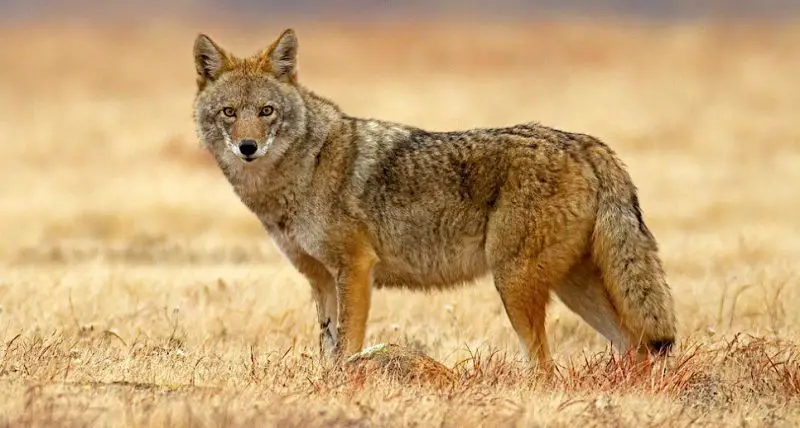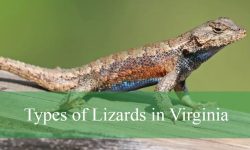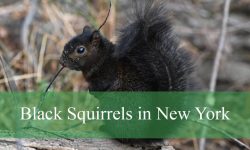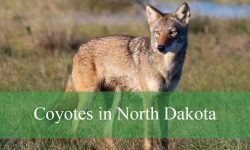Coyotes are among the most adaptable predators in North America, thriving in environments ranging from remote deserts to suburban backyards. In Texas, where urban sprawl meets wide stretches of open land, interactions between coyotes and domestic dogs are becoming more frequent. This naturally raises an intriguing and somewhat concerning question: are coyotes in Texas breeding with domestic dogs?
In this article, we’ll explore the biology, behavior, and scientific evidence behind coyote-dog hybrids, also known as coydogs. You’ll learn how to identify them, where they’re found in Texas, and whether they pose risks to humans, pets, and wildlife.
Understanding Coyotes in Texas

Coyote Overview
Coyotes (Canis latrans) are native to North America and have long adapted to Texas’s varied ecosystems. From the deserts of West Texas to the pine forests of East Texas and the urban edges of Dallas and Houston, coyotes can survive almost anywhere. They are medium-sized canids, typically weighing between 25 and 45 pounds, with a lean, athletic build, pointed ears, and a bushy tail often tipped in black.
Behavior and Ecology
Coyotes are omnivorous and opportunistic feeders. They consume small mammals, birds, fruits, insects, and even human refuse when available. In Texas, they play a vital role in controlling rodent and rabbit populations, contributing to ecological balance.
Despite being highly social within family groups, Texas coyotes are cautious around humans. They are most active during dawn and dusk, though urban individuals often adjust their schedules to avoid people.
Expanding Territories
As human development pushes deeper into natural landscapes, coyotes have adapted by moving closer to cities. This overlap increases encounters with domestic dogs, both pets and free-roaming strays, setting the stage for potential hybridization.
What Is a Coydog?
Definition and Origins
A coydog is the offspring of a male coyote and a female domestic dog. While theoretically possible, the two species have different breeding cycles and behavioral traits, which make successful hybridization uncommon in the wild.
Coyote breeding season typically occurs between January and March, while most domestic dogs can breed at any time of year. This mismatch, combined with natural territorial instincts, limits the number of viable hybrid litters.
History of Coydogs
The idea of coydogs is not new. Reports of hybrids date back centuries, especially in regions where wild and domestic canids overlap. However, much of what people call a “coydog” today often turns out, upon genetic testing, to be a pure coyote or a feral dog with coyote-like features.
Still, scientific research confirms that coyote-dog hybrids do exist in certain parts of North America, including some documented cases in Texas.
Are Coyotes in Texas Actually Breeding with Domestic Dogs?
Scientific Evidence in Texas
Studies from wildlife biologists at Texas A&M University and other institutions have revealed limited but real evidence of coyote-dog hybridization in Texas. Genetic analyses of coyote populations across the state have shown traces of domestic dog DNA, particularly in urban and suburban areas where interactions are more likely.
However, these cases represent a very small percentage of the overall coyote population, typically less than 5 percent. In other words, while hybridization does occur, it is far from common.
Why It’s Rare
There are several reasons why coyotes and dogs rarely breed successfully in Texas:
- Different breeding cycles – Their reproductive timing doesn’t usually align.
- Behavioral barriers – Coyotes are cautious and prefer their own kind.
- Pup survival rates – Hybrid pups often struggle to survive in the wild due to conflicting instincts.
- Social structure – Coyotes are monogamous, while dogs tend to breed more freely, leading to mismatched pairings.
Urban Hotspots
If coydogs are born in Texas, they are most likely to appear near urban edges where both coyotes and stray dogs coexist. Areas like San Antonio’s outer suburbs, Dallas-Fort Worth’s greenbelts, and Austin’s nature preserves have been identified as potential zones for hybrid encounters.
How to Identify a Coydog
Physical Characteristics
Coydogs may resemble coyotes but often display subtle differences due to their domestic dog lineage. Common traits include:
- A broader head and shorter muzzle than a pure coyote
- Variable fur colors, sometimes with unusual patterns like solid black or white patches
- Curling tails or tails held upright like a dog’s rather than horizontal
- Less pointed ears and slightly heavier builds
However, looks can be deceiving. Genetic testing remains the only reliable way to confirm a coydog.
Behavioral Differences
Coydogs tend to behave differently from wild coyotes. They may:
- Be less fearful of humans
- Exhibit daytime activity rather than being nocturnal
- Bark more often instead of howling
- Display erratic or playful behavior typical of domestic dogs
In rural Texas, reports of unusually tame or bold coyotes are sometimes attributed to hybridization, though many are simply urban-adapted coyotes that have learned to coexist near people.
Why Coydog Hybrids Matter in Texas
Ecological Implications
Coydog hybrids may affect Texas’s ecosystems in subtle ways. Since hybrids may not have the same hunting instincts or pack coordination as true coyotes, their impact on prey populations can differ. Over generations, if hybridization increased, it could potentially dilute the genetic purity of native coyotes.
Human and Pet Safety
Coydogs might be less predictable than either parent species. Their comfort around humans could make them more likely to approach residential areas, raising concerns about pet safety and disease transmission, especially rabies and mange.
However, confirmed attacks are exceedingly rare. Wildlife officials emphasize that both coyotes and hybrids tend to avoid confrontation.
Conservation Perspective
From a wildlife management standpoint, coydog populations are not considered a major issue in Texas. The state’s coyote populations remain genetically stable, and hybridization levels are too low to threaten ecological balance. Nevertheless, continued monitoring ensures that any future changes are detected early.
Why Hybridization Happens at All
Habitat Overlap
Urban sprawl and expanding ranchlands blur the boundaries between wild and domestic animal territories. Free-roaming dogs, especially in rural Texas, sometimes interact with coyotes when left unneutered.
Mate Availability
When coyote populations are isolated or mates are scarce, lone coyotes may pair with dogs. This is more likely to happen in fragmented landscapes or during population declines.
Human Influence
Unfortunately, some hybridization has resulted from human intervention, either intentionally or accidentally. A few individuals have tried breeding coydogs out of curiosity, though such practices are discouraged and illegal without proper permits.
Common Myths About Coydogs in Texas
Myth 1: Coydogs Are Taking Over Texas
This is false. Genetic studies show that pure coyotes dominate the population. Hybridization rates are minimal, and no evidence suggests coydogs are expanding widely across the state.
Myth 2: Coydogs Are Dangerous to Humans
There is no proof that coydogs are more aggressive than regular coyotes. In fact, most avoid humans entirely. Problems arise only when people feed or approach them, leading to habituation.
Myth 3: Coydogs Make Good Pets
Coydogs are not suitable pets. Their unpredictable temperament, high energy levels, and need for territory make them difficult to manage. They also require permits under Texas wildlife laws.
Myth 4: Every Odd-Looking Coyote Is a Hybrid
Many pure coyotes show color variations due to natural genetic diversity. Not every coyote that looks different is part dog.
Coydogs vs Coywolves: What’s the Difference?
It’s important not to confuse coydogs with coywolves, which are hybrids between coyotes and wolves. Coywolves are common in the northeastern United States and parts of Canada, where wolf populations persist.
Texas does not have native wolves in significant numbers today, so the hybrids seen here are almost always coyote-dog crosses, not coyote-wolf mixes.
How to Tell Coyotes Apart from Dogs in Texas
Many people in Texas mistake coyotes for stray dogs, especially in suburban areas. Here are a few quick identification tips:
- Tail position – Coyotes usually carry their tails down or level with the body, unlike dogs that hold them upright.
- Gait – Coyotes have a light, graceful trot with narrow tracks; dogs walk with a heavier, less straight gait.
- Vocalization – Coyotes produce yips, howls, and high-pitched calls, whereas dogs primarily bark.
- Behavior – Coyotes tend to avoid direct eye contact and keep their distance.
Recognizing these traits helps residents report sightings accurately and avoid unnecessary fear.
What to Do If You Encounter a Coydog or Coyote
Stay Calm
Do not run or panic. Maintain eye contact and make yourself look larger by waving your arms or opening your jacket.
Make Noise
Shout, clap, or use a whistle to scare it away. Coyotes and hybrids usually retreat once they realize you’re not prey.
Secure Pets and Food Sources
Keep pet food indoors and supervise small pets, especially at dawn and dusk. Secure garbage cans and clean up fallen fruit from trees.
Report Unusual Behavior
If a coyote or coydog acts aggressively or approaches humans repeatedly, contact Texas Parks and Wildlife Department (TPWD) or local animal control.
How Texas Manages Coyotes and Coydogs
Texas has one of the most flexible wildlife management policies regarding coyotes. They are classified as non-game animals, meaning they can be controlled year-round when causing damage to livestock or property.
However, hybrid or pure coyotes that are healthy and non-aggressive are generally left alone. TPWD and local conservationists focus on public education, teaching communities how to coexist safely with urban coyotes.
Trapping or killing suspected coydogs is discouraged unless there’s verified danger, as misidentification often leads to unnecessary harm to native wildlife.
Tips for Living Safely Around Coyotes in Texas
1. Secure Your Yard
Install fencing at least 6 feet high and bury it several inches underground to prevent digging.
2. Eliminate Attractants
Remove outdoor pet food, fallen fruit, and open trash containers that might lure wildlife.
3. Supervise Pets
Keep cats indoors and walk dogs on leashes, especially in wooded or undeveloped areas.
4. Use Motion-Activated Lights
Coyotes dislike bright light and sudden noise. Installing deterrents can discourage nighttime visits.
5. Educate Neighbors
Community awareness is key. Encourage neighbors to follow the same precautions so coyotes don’t find easy feeding opportunities.
Fun Facts About Coyotes in Texas
- Coyotes are known for their iconic howls, which help maintain pack communication.
- They can run up to 40 miles per hour when chasing prey or escaping danger.
- Coyotes are excellent swimmers, which helps them cross rivers and streams across Texas.
- Their diet can shift seasonally, with more fruits and insects in summer and more small mammals in winter.
- Coyotes can adapt to urban life, hunting rats and scavenging, yet remain remarkably elusive.
FAQs About Coydogs and Coyotes in Texas
Are Coydogs Common in Texas?
No. They exist but are rare. Most sightings turn out to be pure coyotes or feral dogs.
Can a Coyote Mate with a Dog Naturally?
Yes, it’s biologically possible, but it happens infrequently due to mismatched breeding cycles and behaviors.
How Long Do Coydogs Live?
In captivity, they can live up to 10–14 years, but in the wild, survival is lower, often under 5 years due to environmental pressures.
Are Coydogs Legal to Own in Texas?
You must have a special permit to keep any hybrid wild animal in Texas. Coydogs are not recommended as pets.
What Should I Do If I See a Coydog?
Observe from a distance, do not approach, and report to wildlife authorities if it acts aggressively.
Conclusion: A Rare but Fascinating Phenomenon
While the idea of coyotes breeding with dogs captures the imagination, coydog hybridization in Texas remains rare. Most of the state’s coyote population continues to thrive as pure wild canids, skillfully balancing life on the edge of human civilization.
Coyotes have proven to be one of nature’s greatest survivors, intelligent, adaptive, and resilient. As Texans continue to expand into natural habitats, understanding and respecting these clever predators will ensure peaceful coexistence for generations to come.






